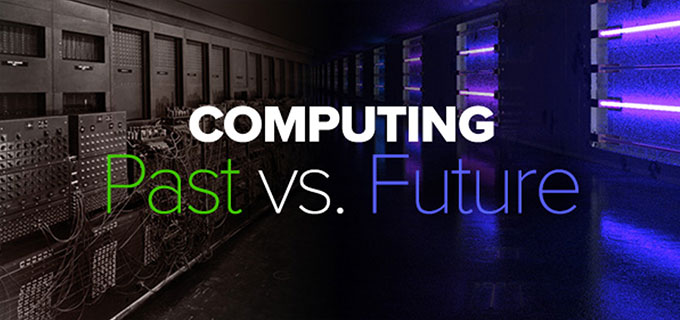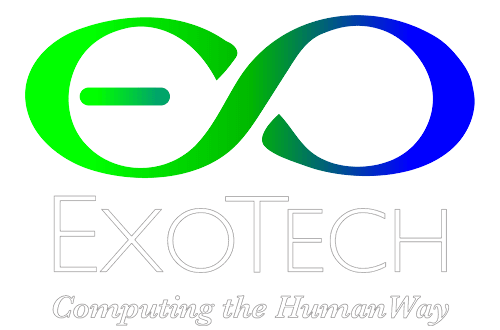
What Went Wrong in the Early Days of Software Development?
Today’s software is a mess. Computer programs are far too complicated, have far too many things that you have no idea how to use and always seem to be coming up with errors that make no sense at all.
And yet, there were several points of opportunity where the software developers of this world could have changed the direction of their field and created a far better software environment. But they didn’t!
I lived through one particular point in history in this respect – the launch of the IBM PC in the early 1980s.
To understand the full significance of the devastating betrayal that was committed on the development of computer software, I need to go over a little history.
Firstly, before the IBM PC was launched, there were two computer environments:
- The mainframe and minicomputers that large corporations used.
- And the “play” environment that was developing around small personal computers.
The corporate mainframes, the first arena, were locked into a development path that was, even then, very fixed. But the bubbling personal computers were an open field of innovative design and blindingly brilliant development. Anything could happen there – and did!
But there was no consistency – there were six or eight quite different hardware systems, each with a different software operating system. Developers were stealing ideas from each other and coming up with incredible new ways to work their magic in their crazy world.
And then, along came the IBM PC. It was targeted at the corporate market – specifically at managers who needed computing power, but who could not wait for their cumbersome computer departments to respond to their requests. But, despite being targeted at the business customer, the original PC impacted all levels of the small/personal computer arena.
As a result, the IBM PC not only became an overnight hit, but it also quickly killed all interest in any other operating system or microcomputer that had been available up till then. Except for the Apple range, which was the only one that survived the onslaught.
So now, let’s see where it all went wrong. The missed opportunity to change the direction of software development happened in the 1980s. When the IBM PC was released, it was a device that started with 16 KB of working memory. Now what does that mean? The working memory in a computer is where all the action happens. When you tell the computer to do something, it opens the program that will perform that action in the working memory of the PC. It then collects all the data involved and puts that into the memory of the device too. So now the computer can manipulate that data, using that program.
Now, the working memory of a PC is called Random Access Memory, RAM for short. You may have heard it referred to that way. OK – so how big is 16 KB of RAM? Well, in today’s PCs, a single page of text, created in a simple Microsoft Word document, is 16 MB is size. That’s exactly 1,000 times bigger than the entire working memory of the first IBM PC. And in today’s PCs, the RAM is often around 16 GB, which is 1 million times bigger than the original PC. That’s an amazing growth.
So how did we get from there to here? Well, there’s a thing called “Moore’s Law.” It was stated in 1965 by Gorden E. Moore, the co-founder of Intel, the famous computer microchip maker. His statement was:
The number of transistors on a microchip doubles about every two years, though the cost of computers is halved.
And there’s the opportunity that was missed. Here was this burgeoning industry, bursting onto the scene, bristling with hope and excitement. And with a basis that says its basic technology will double in size (and speed) every two years as the price of the devices comes down by half each time. Wow! What an amazing opportunity.
As an example of how it worked, just seven years after the IBM PC was launched, they launched the PS/2, which was the follow-on product to the original PC. I was the product manager in Australia for the IBM PC at the time and managed that whole thing here. And, just to make the point in numbers, the PS/2 had a basic working memory (RAM) of 512 KB – 32 time bigger than the PC had. And it had a 20 MB internal hard drive for storage, when the PC had no internal storage at all. That’s Moore’s Law in action. And Moore’s Law went on to make it possible to have the RAM in today’s smart phones over 100 million times larger than the original PC had.
So, what did we miss out on during this crazy development cycle? Well, there was a lot of talk at the time from the development guys in IBM with whom I used to deal regularly. They had a vision that with all this extra speed, extra storage, extra power and extra capacity, they would now be able to use all that additional oomph to make it easier for users to operate their PCs.
Well, there’s an idea for you. Let’s use this extra power to make the systems easier for users to find data, to manipulate data, to use the more complex functions and to make it so much better for everyone who used a PC. And they could easily have done that. Moore’s Law continued to work. Computers became faster, more powerful, with larger RAM and internal storage. It was a wonderful opportunity.
And they blew it. Wow, did they blow it. They blew it because the powers controlling the development direction saw more money in using all that extra power to add more function, more programs, more buttons, more menus and more complexity. And do you know what? That actually made PCs even harder to use. This increased complexity got to the point just a few years later where most people could not operate a PC to any large degree at all.
And that situation continued right through to today, except that it has become even worse than it was in the early ’90s. Today, 95% of people who open a Word document, have no idea how to use 95% of the features and functions that it has. And yet, they would like to know!
One of the amazing things that ExoTech is doing is repairing this ridiculous situation. With ExoTech, when you open a document to edit (like you do in Microsoft Word), you will not need to know all the complexities involved with creating fancy borders, multi-column text, complex headers and footers, and many other things. You don’t need to know that, because the ExoBrain will know it. And all you have to do is tell the ExoBrain what you want. The ExoBrain will know it all and will be able to produce whatever effect you want. It could be a simple as saying to your ExoBrain:
“Switch to 3-column format from this page forward and change the header to say; ‘Main Focus’ from this page onwards.”
You won’t need to know which menu to go to, or which options to choose, or which preferences to select so that those menus and options were even available. So, ExoTech has fixed a 30-year degradation of the computer software industry, right there. And that will bring people running for miles, just to experience such an incredible relationship with our new computing platform: ExoTech.

